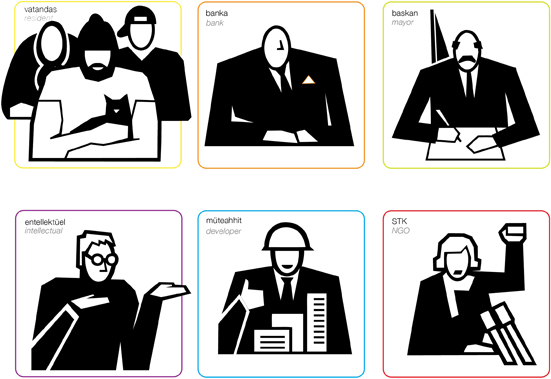*For the clarity of term game, by World of Citycraft, we do not refer to video games such as ‘Simcity’, or not to city simulation games such as ‘Specefighter’ or not to board games such as ‘Settlers of Catan’. World of Citycraft is an interactive real-time real-agent city generation game. World of Citycraft is the medium to craft a city besides decision making and designing. Citycraft is dependent on the individual agents and evolving local decisions based on real urgencies and needs more than the artificial and stylistic obsession of designers and/or planners.
How are games the right medium for city-making?
1.Games can be used as constructive participation tools.
Games provide players an open platform to generate cities in an interactive and negotiative way.
However, traditional participation tools we have today such as inspraakavonden are destructive more than they are constructive. They carry negative vibes as people get together as they oppose to a future plan where they feel under-represented. Just as spraakavonden many participation tools carry the paradox of trying to become bottom up, but they mostly are initiated by top down bodies.
Games can bring bottom up and top down bodies together and facilitate them to create together.
2.Games can allocate thousand of agents [people as city-makers].
Not only limited number of city planners, investors and private developers but also every citizen who wants to have a say on his own environment can be part of the city-making.
3.Games allow decision-making and physical designing simultaneously.
We believe games are the new drawing boards and conference rooms of the urban planning profession. Playing the game is designing and deciding the city at the same time.
4.Games stimulate and facilitate the collective intelligence.
The creativity in city-making can only emerge from the open effective interactions of vast amount agents. No genius designer or group of designers can draw a plan from their drawing table. The rules to generate a city however can be developed via the game by bottom up and top down players, or better from their collective intelligence.
5.Games suggest a system of dynamic rules and orders as opposed to frozen building rules and regulation.
Games provide the right interface to test new rules or abolish old rules that strangle changing urban dynamics. For example one can question why in Almere the city does not get more densely built along the bus line or bus stops if the city has ambitions to become the most sustainable city of the Netherlands, or just as it happens in Curitiba. Games can give the possibility to simulate what would happen in Almere if her inhabitants were allowed to re-densify their cities.
6.Games are the right medium to connect the virtual world to real and back to virtual again.
We are in an era where our virtual world is becoming as rich as our ‘real’ life. Most of the city agents are active in populating the virtual worlds such as facebook, linkedin, foursquare... While games are perfect tools to links those worlds, existing city planning tools are blind to the virtual worlds and the possibilities they offer.
